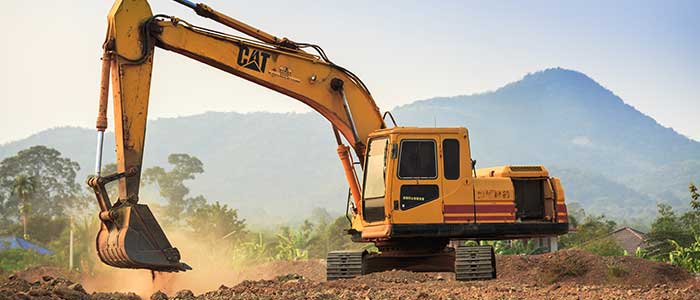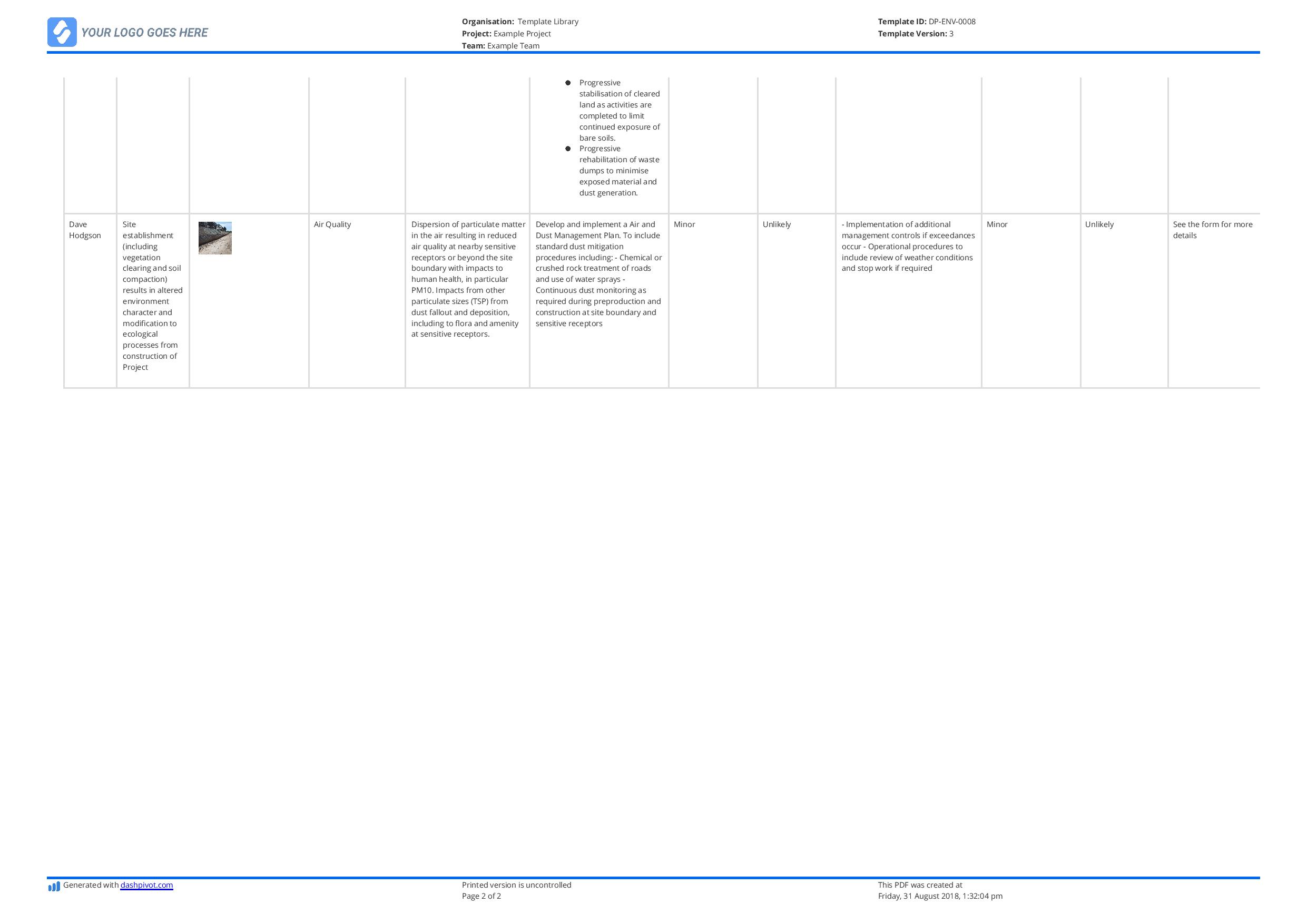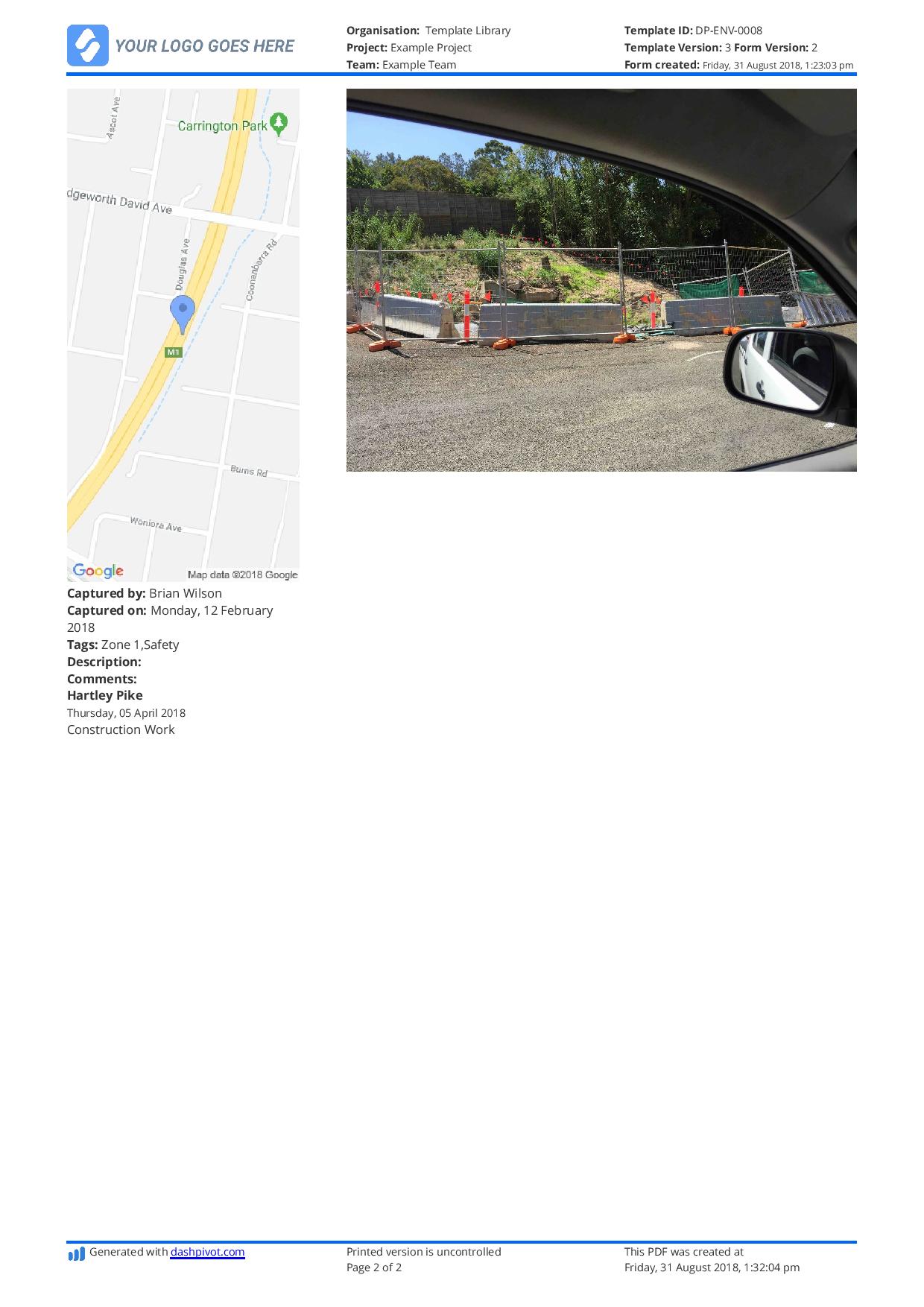Enviro – Environmental risk register
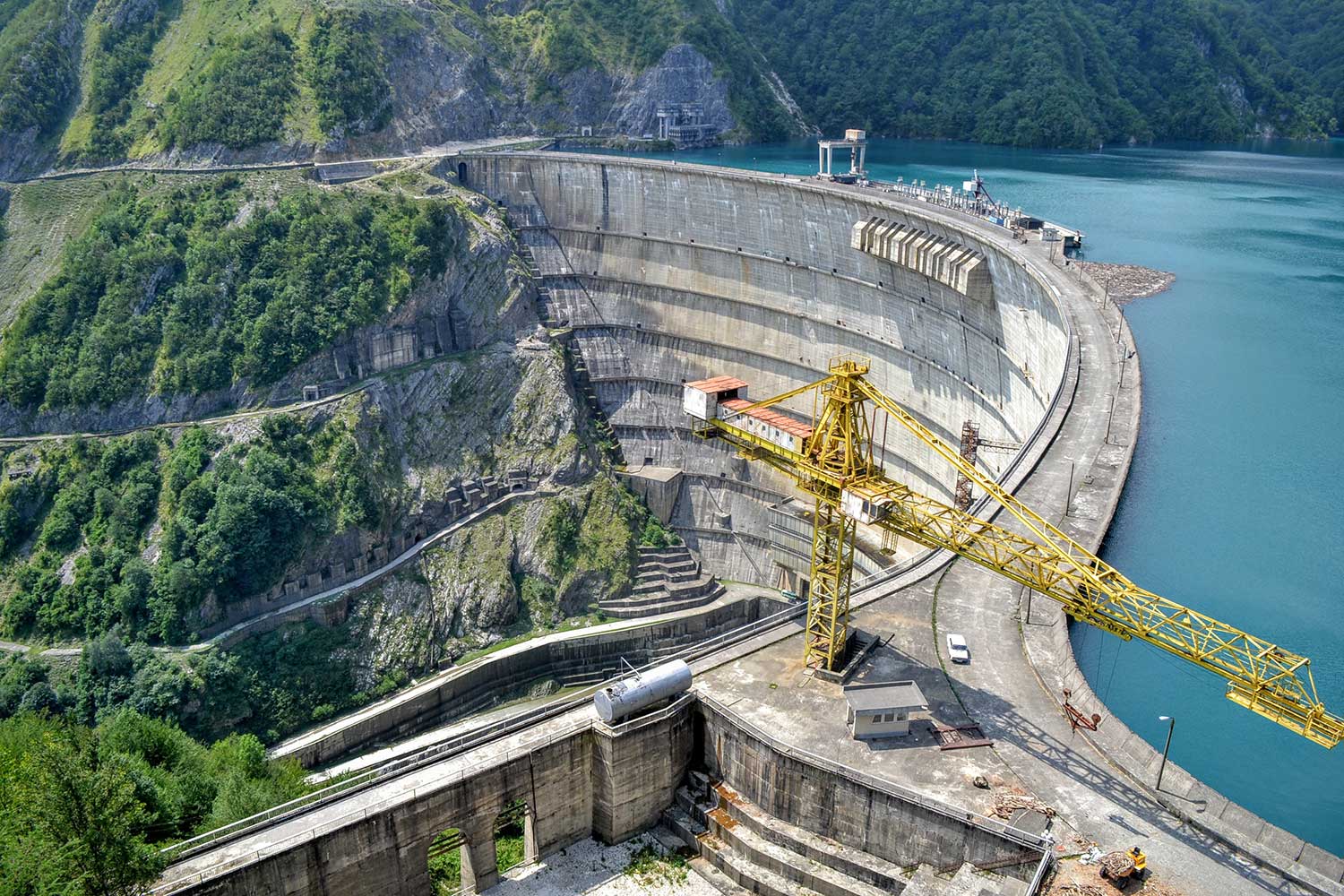
Environmental risk and opportunity register example: Here's what you need to include
What is an environmental risk and opportunity register?
Environmental risk and opportunity registers help companies in the industries to summarise and document the potential environmental risks and opportunities associated with a particular project.
These registers enable companies to look objectively - both before and during a project - at the potential environmental risks which could eventuate from the works or activities being conducted - and create opportunities to improve their risk profile and environmental performance.
The risk register then serves as a ranking and prioritisation tool of all environmental risks, with every brainstormed or hypothesised risk being scored according to it's likelihood and impact. This allows companies to make more informed decisions about the efforts they make to mitigate those risks in order to improve project outcomes.
Risk registers serve as an important brainstorming and reference tool for individuals, companies and project teams. They are also an important planning exercise and help to form the overall business case for the project.
Below is an example of an exported environmental risk register.
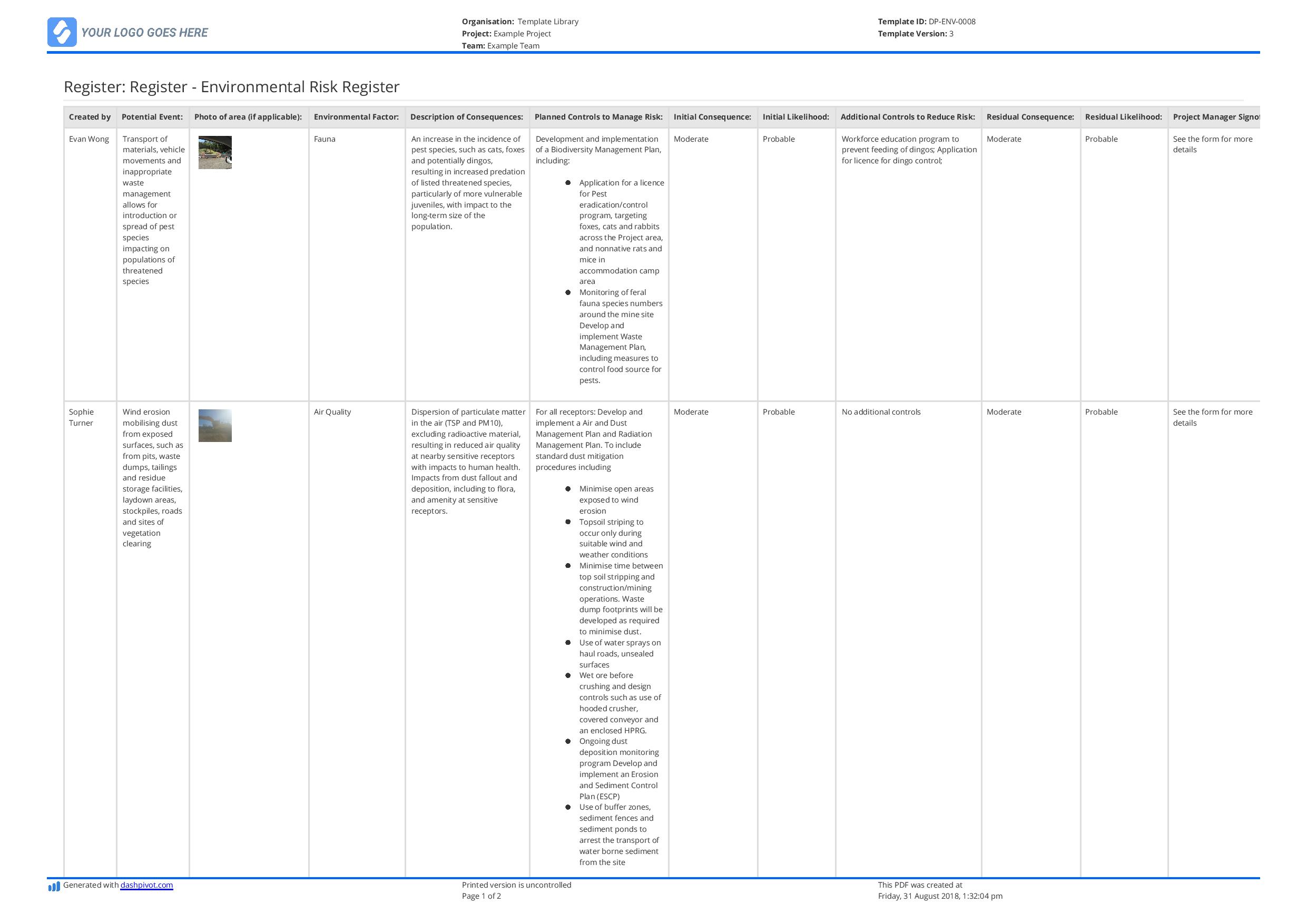
Use and custiomise this environmental risk register template for free.
Why should your or your company create and maintain an environmental risk register?
Environmental risk registers are becoming more and more important to project success. Recent environmental disasters and a general uptick in environmental awareness have created an environment where poor environmental performance is simply not tolerated.
Having a major oil spill or any type of negative impact on the environment can affect project execution (delays and cancellations) and can seriously damage or tarnish a company's entire reputation in the eyes of other companies, contractors and the general public.
Environmental risk and opportunity registers also serve as your single source of project proof. Consolidating your risks on a single register which everyone can reference helps people stay on the same page with regards to what could happen, what is happening, and what should happen.
Lastly, conducting an environmental risk assessment forces people to to take a minute to assess the situation and make good decisions. Without partaking in this exercise, it's easy to move forward without considering the consequences of certain actions or alternative approaches to issues.
Environmental risk examples
There are plenty of environmental risks on industrial sites. Industrial sites span the full spectrum of the 'environment'. They can be massive or small; in the middle of cities or in the middle of oceans.
The diversity of construction and industrial sites mean every project will have slightly different risks to consider - but they usually centre on a few core risks:
- Fauna - Specific risks associated with native animal species and vulnerable habitats
- Flora - Risk associated with the clearing and intrusion on land
- Air quality - Particularly in largely built-up areas, there are a number of risks stemming from access to clean air uninhibited from heavy machinery pollution, dust etc.
- Historical and cultural heritage - Historical and cultural sites are also considered part of the 'environment', and must form part of an environmental risk and opportunity register
This is far from an exhaustive list, and as you may have gathered, there are hundreds of subcategories within these high level categories which may require 'unearthing' for your projects.
The larger the scale of the project and touch points of site, the more granular you will have to get on your risks. The risk register for a large scale road project stretching for hundreds of kilometres in outback Australia will look a lot different to a small project conducted in the middle of New York City.
Below, we'll dive into a little more detail around what each risk should include - in order to create a usable and useful risk and opportunity register.
Example risk: Air quality
Air quality is a common risk which stems from the air quality on site for workers, as well as the air quality impacts of works taking place in cities and other suburban areas.
Potential event: Wind erosion mobilising dust from exposed surfaces, such as from pits, waste dumps, tailings and residue storage facilities, laydown areas, stockpiles, roads and sites of vegetation clearing
Description of consequences -Dispersion of particulate matter in the air (TSP and PM10), excluding radioactive material, resulting in reduced air quality at nearby sensitive receptors with impacts to human health.
Initial consequence - Moderate
Initial likelihood - Probable
See below for the full register item. This is one horizontal row on your register, and forms one full 'risk' category which should be scored for likelihood and impact.
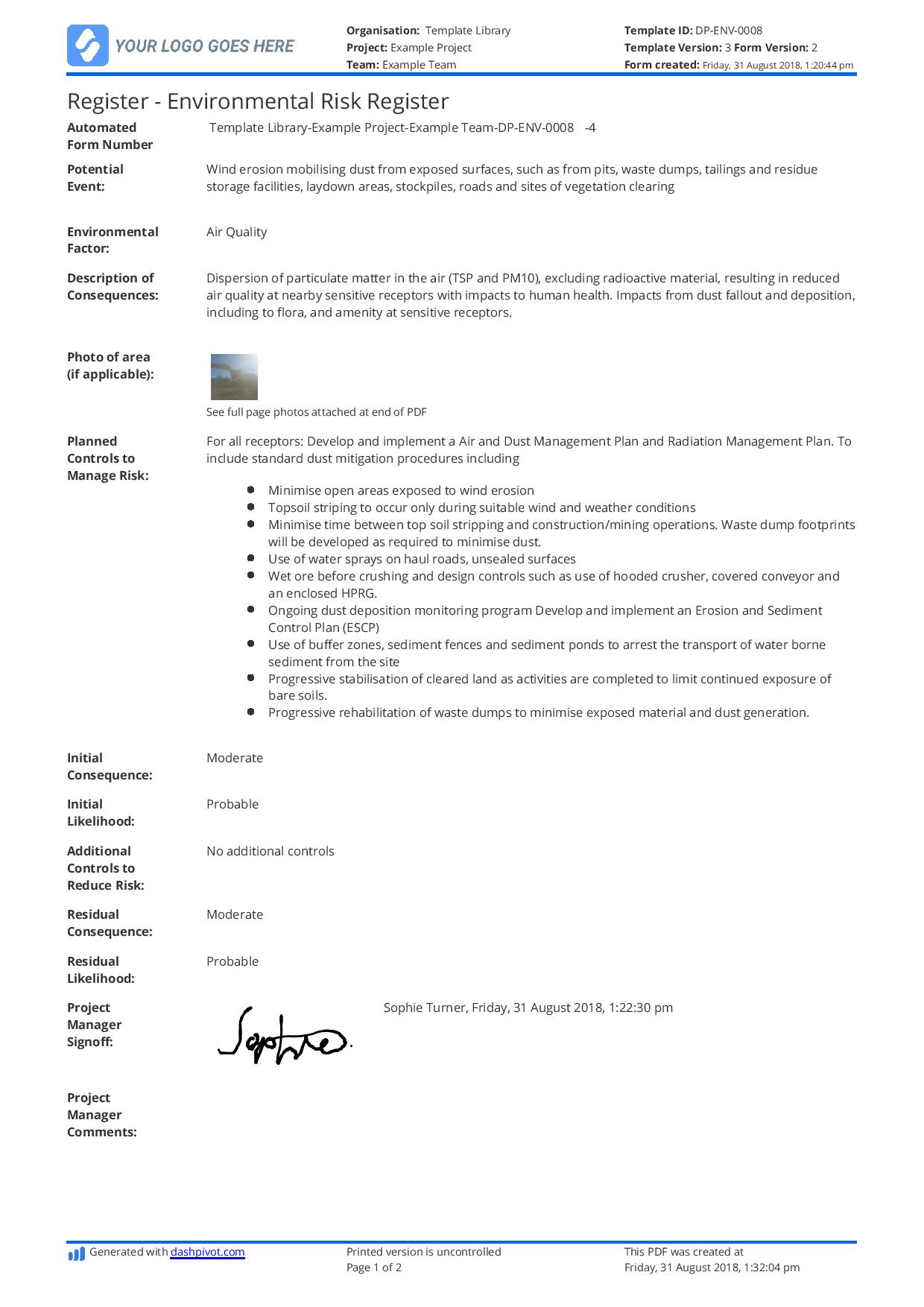
Example risk: Fauna
Fauna is always an important risk and factor to consider, as animals are extremely vulnerable to the removal of their habitats, and because people love animals and vilifying companies ruining animal habitats.
Potential event: Transport of materials, vehicle movements and inappropriate waste management allows for introduction or spread of pest species impacting on populations of threatened species
Description of consequences - An increase in the incidence of pest species, such as cats, foxes and potentially dingos, resulting in increased predation of listed threatened species, particularly of more vulnerable juveniles, with impact to the long-term size of the population.
Initial consequence - Moderate
Initial likelihood - Probable
See below for the full register item example.
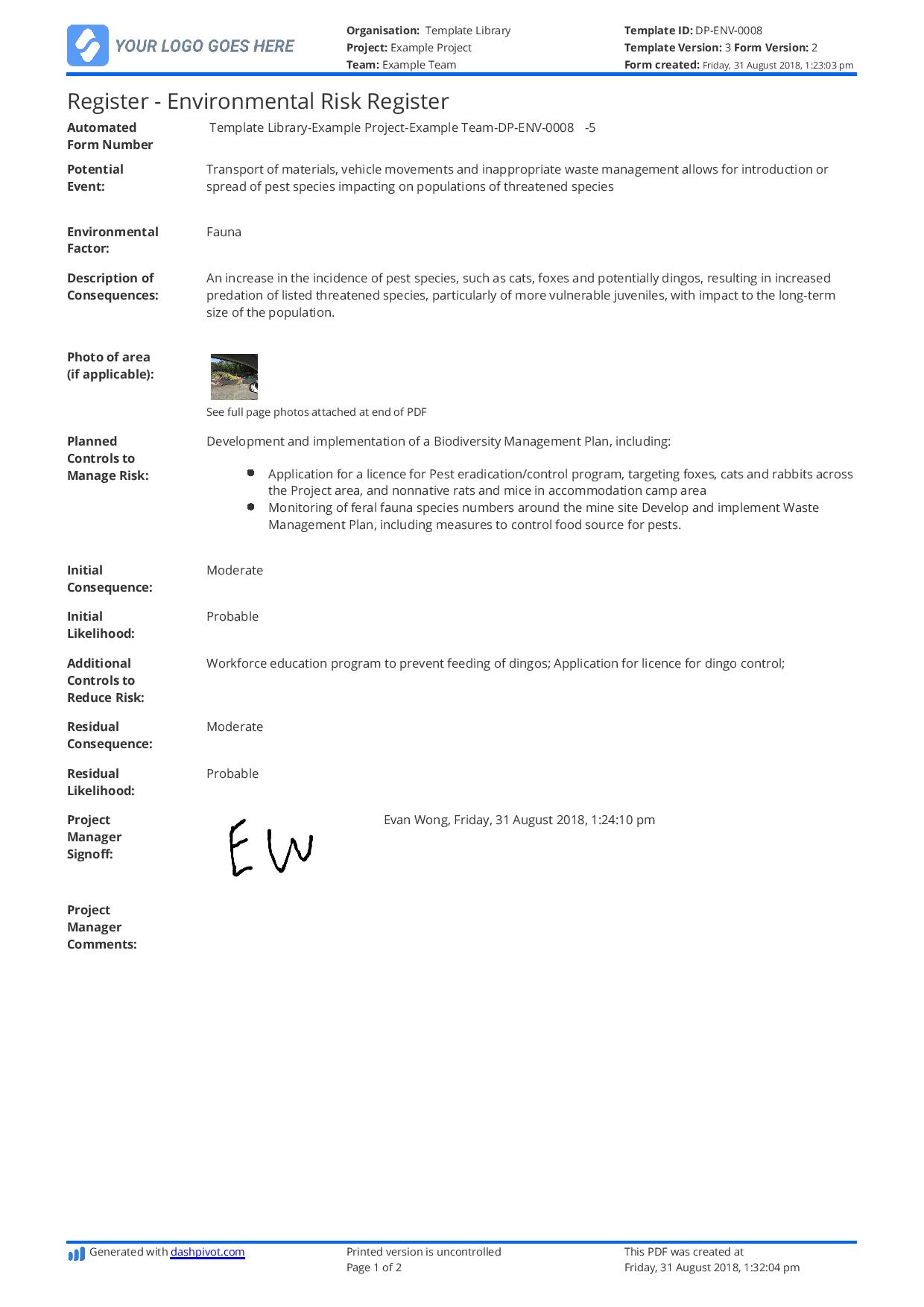
Are you documenting and managing your environmental risks and opportunities properly?
The emphasis on environmental performance in the industries is increasing, and so are the resources and teams charged with improving and maintaining environmental standing.
Even so, it's easy for environmental impacts and risks to get buried beneath the subject of financial, production and commercial controls.
One way to ensure that your people and company stay aware and cognisant of the environment is to create environmental risk and opportunity registers.
The act of creating a register helps companies to think about the potential impacts of their work, resources effectively, and reduce the likelihood of disaster. Managing the environment is an important part of project success, and cleaning up your approach and processes around the environment can help you look after the planet and look after your company.

Environmental Risk Register template
Better summarise and organise all of your environmental risks with this clean and flexible template. See the template →